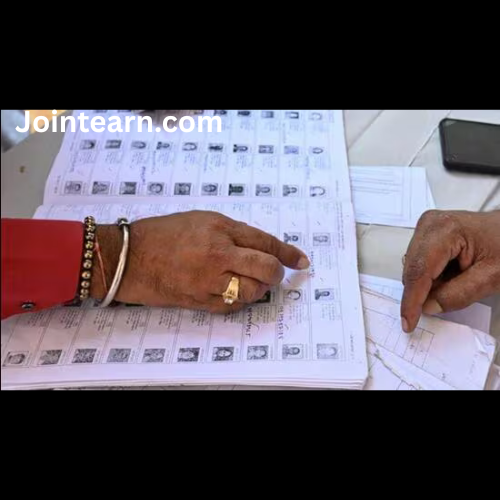The 2025 Bihar Assembly election results delivered tough lessons for many political players, but perhaps none more so than Prashant Kishor and his Jan Suraaj Party (JSP). Despite months of intense campaigning, a loud social media footprint, and a narrative sharply focused on long-standing structural problems in Bihar, the JSP failed to make any measurable electoral impact. The outcome served as a sobering reminder of the complexity of Bihar’s political landscape, where even a well-crafted message, backed by the credibility of one of India’s most prominent political strategists, may fall short without deep-rooted organisational strength.
For Prashant Kishor, the 2025 election was a test not only of his political ideas but also of his ability to transform himself from a celebrated election strategist into a grassroots political leader. Over the past two years, he had invested heavily in building a narrative around the core issues that have shaped Bihar’s socio-economic conditions for decades: chronic unemployment, the mass migration of workers, the quality of public education, and the alarming absence of industrial development. Through long padyatras, public dialogues, and digital campaigns, Kishor attempted to shift attention from personality-driven politics to issue-centric governance. Yet, when the votes were counted, the party failed to register a meaningful presence.
The JSP’s weak showing was not entirely unexpected to seasoned observers. A year earlier, when the party contested four by-elections, it recorded only a minimal vote share, offering the first signs that narrative-building alone would not be enough to derail established political players. Still, Kishor remained confident—some would say excessively so. At one point during his campaign, he predicted that his party would win as many as 150 seats, an assertion widely critiqued as unrealistic. Later, he clarified that the JSP would end up either at the very top or at the bottom, suggesting that voters seeking radical change might gravitate toward his platform.
At the same time, Kishor forecasted an extremely poor performance for the Janata Dal (United), predicting the party would win fewer than 25 seats. The final results proved otherwise, with the JD(U) leading in more than 80 constituencies, firmly securing its role in the NDA’s sweeping victory. For a strategist known for data-driven precision, these miscalculations raised questions about how deeply or accurately the JSP had understood the ground mood.
Still, Kishor continued to frame the elections as an opportunity for Bihar’s youth and migrant workers to assert themselves. Commenting on the state’s high voter turnout—more than 66 percent overall—he claimed that the increased participation reflected purposeful voting and hinted that the results would surprise observers. In hindsight, the surprise was not the performance of the major political blocs but the inability of the JSP to convert issue-driven enthusiasm into ballots.
Political analyst Amarnath noted that Kishor’s biggest success was perhaps a strategic retreat rather than an electoral breakthrough. By choosing not to contest personally, Kishor avoided the embarrassment of a direct defeat while allowing the JSP’s organisational experiment to play out on its own. Amarnath argued that, despite the disappointing outcome, the party’s attempt should not be dismissed outright. Kishor’s campaign touched upon genuine public concerns, and his insistence on reframing Bihar’s political discourse around developmental issues resonated with sections of the electorate, even if this resonance did not translate into votes.
According to the analyst, the JSP’s failure should be treated as a learning opportunity. Politics in Bihar, he emphasized, rewards patience and persistence. Deeply entrenched caste dynamics, longstanding loyalties, and the familiarity of established party networks mean that change is rarely immediate. Kishor’s attempt to disrupt this landscape was bold, but it collided with the brute electoral strength of the NDA, which not only ran a cohesive campaign but also benefited from Chief Minister Nitish Kumar’s enduring administrative credibility and the BJP’s formidable organisational machinery.
Another political commentator, Jaydeep Kumar, echoed these sentiments, stressing that nothing transformative in politics happens overnight. He insisted that Kishor’s effort to introduce an alternative vision should be acknowledged, even if the electoral verdict was harsh. In Jaydeep’s view, the JSP’s failure was not due to irrelevance but due to poor timing. The NDA’s landslide victory left very little oxygen for smaller or newer players to establish themselves. He suggested that Bihar’s political space could look very different by 2030, especially as aging leaders like Nitish Kumar and Lalu Prasad Yadav may no longer dominate the scene. This potential vacuum, he argued, could offer the JSP a more realistic chance to carve out a political niche—provided the party uses the intervening years to strengthen its organisational backbone.
The 2025 elections also highlighted the steep climb newcomers face in a state where political affiliations often span generations. Kishor’s personal reputation as a master strategist was not enough to bypass the credibility gap experienced by fresh political entrants. While young voters showed interest in his message, interest alone does not guarantee mobilisation. Without booth-level workers, sustained in-person engagement, and loyal party cadres, no campaign—no matter how compelling its themes—can withstand the machinery of established political behemoths.
The JSP’s intensive reliance on digital outreach also proved limiting. Bihar’s electoral dynamics continue to hinge on face-to-face mobilisation, social alliances, and direct political networks. Social media buzz, no matter how extensive, cannot compensate for the lack of grassroots infrastructure, especially in rural constituencies where voter behaviour is anchored in hyper-local concerns.
Despite the defeat, analysts agree that Kishor should not withdraw from political life. The campaign demonstrated that issue-based politics can attract attention, even if the conversion to votes was minimal. JSP’s narrative on education, unemployment, and migration struck a chord with many who feel Bihar deserves a stronger developmental trajectory. The challenge ahead is to build a robust organisation, cultivate leaders at the district and village levels, and retain relevance over the next several years.
For Prashant Kishor, the 2025 Bihar election was not the arrival he had hoped for, but it may well serve as the foundation for a more grounded, seasoned political journey. If he internalizes the lessons of this defeat and strengthens his party’s grassroots presence, the JSP could emerge as a meaningful force in the next electoral cycle. The verdict from Bihar, therefore, is not just a judgement on a single election—it is a reminder that serious transformative politics requires patience, resilience, and deep engagement with the people one hopes to represent.


Leave a Reply